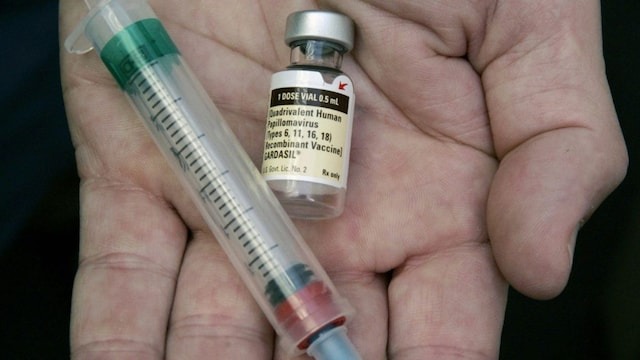
Rare neurological disorders, also known as orphan diseases, are a group of conditions that affect the brain, spinal cord, and nervous system. While each disorder is uncommon, together they impact millions of people worldwide, often leading to:
Severe disabilities
Cognitive decline (memory and thinking problems)
Life-threatening complications
Unlike common neurological conditions such as stroke, epilepsy, or Parkinson’s disease, these rare disorders—including genetic brain diseases, metabolic disorders, and immune-related nerve conditions—are extremely difficult to diagnose and treat.
Dr. Nasli R Ichaporia, Director of Neurology at Sahyadri Super Speciality Hospital, Pune, shared insights into some of the rarest neurological disorders and the challenges in their diagnosis and treatment.
Challenges in Diagnosing Rare Neurological Disorders
One of the biggest hurdles in managing rare neurological disorders is accurate diagnosis, which can take years of medical tests and consultations due to the following reasons:
Lack of Clinical Awareness
- Many doctors never encounter these rare diseases in their entire careers.
- As a result, symptoms are often misdiagnosed as more common conditions.
Overlapping Symptoms with Common Neurological Conditions
- Many rare neurological disorders mimic epilepsy, multiple sclerosis, or movement disorders, leading to misdiagnosis.
- Symptoms like muscle weakness, tremors, and coordination issues can easily be mistaken for more familiar conditions.
Limited Access to Advanced Genetic Testing
- Many rare diseases are genetic in origin, requiring tests like:
Whole-Exome Sequencing (WES)
Whole-Genome Sequencing (WGS) - These tests are costly and not widely available, especially in smaller cities and rural areas.
Fragmented Healthcare System
- Patients must consult multiple specialists across different hospitals before getting the right diagnosis.
- The delay in diagnosis often leads to disease progression, making treatment harder.
Cutting-Edge Diagnostic Approaches
With advancements in medical technology, diagnosing rare neurological disorders has become more accurate. Some breakthrough methods include:
Next-Generation Sequencing (NGS) – Helps detect genetic mutations causing neurological diseases.
Advanced Neuroimaging (MRI, PET scans, DTI) – Offers a clearer view of the nervous system’s structural and functional changes.
Biomarker Analysis in Cerebrospinal Fluid – Helps detect neurodegenerative disorders early.
Electromyography (EMG) & Nerve Conduction Tests – Crucial for diagnosing neuromuscular disorders.
Despite these advances, challenges related to cost, accessibility, and expert interpretation continue to limit early diagnosis.
Treatment Challenges: Why Are Rare Neurological Disorders Hard to Treat?
Lack of Curative Treatments
- Most rare neurological disorders do not have a cure.
- Treatment mainly focuses on managing symptoms rather than addressing the underlying cause.
High Cost of Medicines (Orphan Drugs)
- Specialized medicines for rare diseases, called orphan drugs, are extremely expensive.
- Since these diseases affect only a small percentage of the population, pharmaceutical companies charge high prices to recover research and production costs.
Limited Research & Drug Development
- Since rare diseases affect fewer people, they receive less funding for research.
- As a result, new treatments take decades to develop, and clinical trials are scarce.
Need for Coordinated & Specialized Care
- Managing rare neurological disorders requires a team of specialists, including:
Neurologists
Geneticists
Physiotherapists
Speech therapists
Psychologists - In developing countries, such specialized care is not easily accessible, forcing patients to travel long distances for treatment.
Hope for the Future: Emerging Treatments & Innovations
Despite the challenges, new medical advancements are offering hope to patients with rare neurological disorders:
Gene Therapy – Helps correct genetic mutations responsible for some rare diseases.
Stem Cell Therapy – Regenerates damaged neural tissues to restore function.
Antisense Oligonucleotide (ASO) Therapy – Targets specific disease pathways using advanced drugs.
AI-Powered Diagnostics – Enhances early detection and accuracy of neurological conditions.
With increased research funding, policy support, and technological advancements, these treatments have the potential to revolutionize how rare neurological diseases are diagnosed and managed.
The Way Forward: Improving Care for Patients with Rare Neurological Disorders
While medical progress has led to better diagnostic tools and treatment options, significant challenges remain, including:
Limited accessibility to advanced testing
High treatment costs
Fragmented healthcare systems
To address these issues, a collaborative effort is needed between:
Doctors & researchers – To enhance medical understanding and treatment options.
Policymakers – To implement healthcare policies that support rare disease research.
Pharmaceutical companies – To make treatments more affordable.
Patient advocacy groups – To provide support & awareness for affected individuals.
By investing in research, improving healthcare policies, and increasing access to advanced treatments, we can ensure earlier diagnoses, better treatments, and improved quality of life for patients with rare neurological disorders.

 Desk
Desk Share
Share






